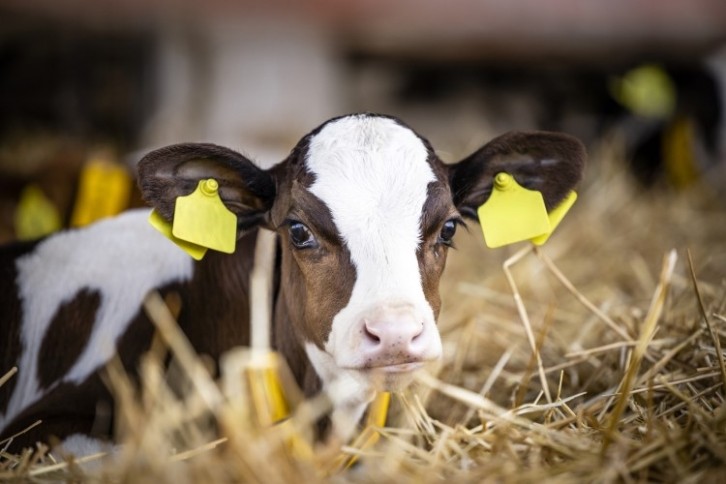‘We were really surprised’: Low-cost precision technology can detect bovine respiratory disease days before symptoms appear

A group of researchers from Penn State, University of Kentucky and University of Vermont deployed precision technology and machine learning techniques to find out if this approach could enable timely and accurate diagnosis of bovine respiratory disease (BRD), including persistency (i.e. detecting chronically-ill animals) and early detection in calves that aren’t yet showing clinical symptoms.
BRD is the main cause for antimicrobial use in dairy calves and the cause of nearly a quarter (22%) of calf mortalities. Undetected, the disease could have effects on growth and milk production. This is why being able to identify the disease early on could help farmers treat their calves early, allowing for quicker recovery and minimizing any long-term effects. While farmers typically monitor their animals for visible signs of disease, assessing each calve for signs of BRD is labor-intensive, particularly at a time when worker shortages are putting significant strain on operations.
Deploying low-cost precision technologies – such as wearable sensors or automatic feeders - can help farmers monitor calf behavior without the associated labor and economic requirements, the authors theorized. “For instance, health exams require an initial investment of $11,992 to pay trainer and trainee for a period of about 12 weeks…, and $1.83 of daily payments per calf to perform the exams,” the authors wrote in the paper. “On the other hand, a pedometer only requires a purchase of $90 per calf and a daily maintenance of $0.38 per calf, while a grain feeder requires a one-time purchase of $6,500 and a daily maintenance of $1.62.”
Ground-breaking
The study, which has been published in the open-access scientific journal IEEE Access, is claimed to have produced several industry-firsts – ‘the first framework to ever perform early prediction of BRD persistency status’; the first dataset to include precision tech, manual health exams and ultrasonography imaging to diagnose BRD; and the dataset with the largest number of adopted precision technology devices.
For example, each calf wore a pedometer sensor, data from which was collected every 15 minutes, including step count and lying time. The animals also wore RFID ear tags to identify when each of them approached the automated feeder, to identify changes in appetite. “We put leg bands on the calves, which record activity behavior data in dairy cattle, such as the number of steps and lying time,” explained lead researcher Melissa Cantor, assistant professor of precision dairy science in Penn State’s College of Agricultural Sciences. “And we used automatic feeders, which dispense milk and grain and record feeding behaviors, such as the number of visits and liters of consumed milk. Information from those sources signaled when a calf’s condition was on the verge of deteriorating.”
Creating the dataset
The trial was carried out over the course of two years, from June 2018 and September 2019 and then from February 2020 to November 2020, with a total of 159 calves involved in the project. The researchers adopted a machine learning model paired with a feature selection problem that ‘selects the best features that maximize the prediction accuracy’ and proposed an algorithm to test different subsets of features. The data was collected by the researchers, who physically examined the calves for signs of outward disease and lung consolidation. Both automatically-collected and manually-collected results were recorded and compared.
Through this framework, the researchers found that their system labeled ill and healthy calves with 88% accuracy, and correctly identified 70% of the calves four days before they were diagnosed with the disease. Additionally, 80% of calves that developed chronic BRD were detected within the first five days of sickness.
“To the best of our knowledge, this is first work to study BRD persistency status through cost-effective machine learning techniques, and the first study to publish such a comprehensive dataset, which includes ultrasonography along with health exams, and provides the highest number of precision technologies,” the authors concluded.
Cantor said: “We were really surprised to find out that the relationship with the behavioral changes in those animals was very different than animals that got better with one treatment. And nobody had ever looked at that before.
“We came up with the concept that if these animals actually behave differently, then there's probably a chance that IoT technologies empowered with machine learning inference techniques could actually identify them sooner, before anybody can with the naked eye. That offers producers options.”
Source:
A Machine Learning and Optimization Framework for the Early Diagnosis of Bovine Respiratory Disease
Cantor, C. M., et al
Published: 20 June 2023
DOI: 10.1109/ACCESS.2023.3291348














